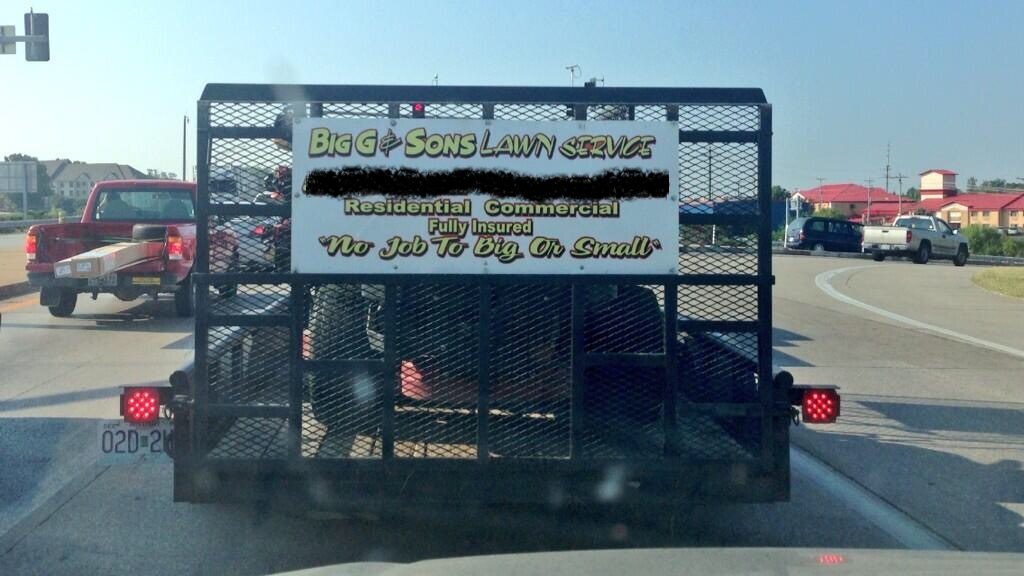I hope you have enjoyed this week of Thanksgiving Grammar Giggles and I hope you had a great Thanksgiving. For the final post, when the schools can’t even get it right . . .
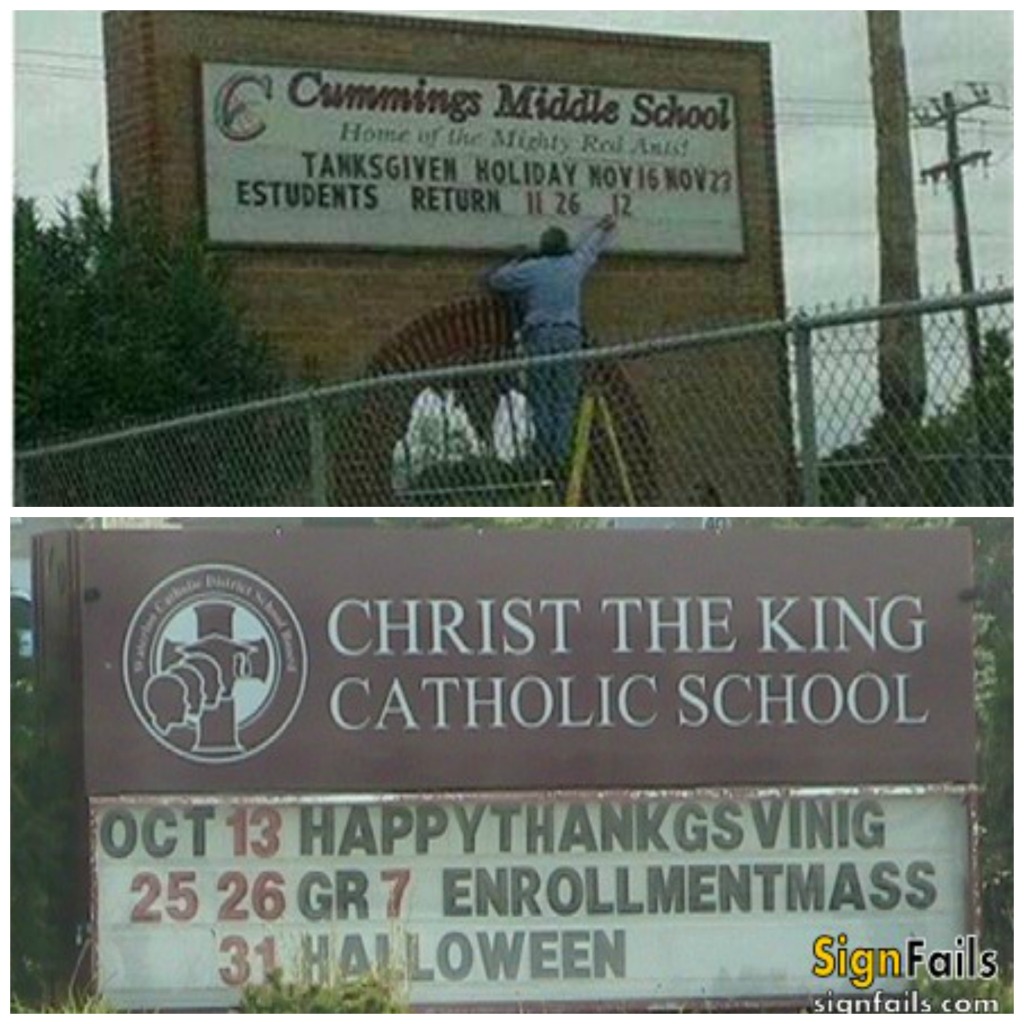
I hope you have enjoyed this week of Thanksgiving Grammar Giggles and I hope you had a great Thanksgiving. For the final post, when the schools can’t even get it right . . .

Among my many blessings, I count each of you who continue to read this blog, send me pictures, and post things you find on Facebook on my wall. The decision I agonized over a couple of years ago about whether to start the blog was definitely the right one. I truly do appreciate your support! Happy Thanksgiving!
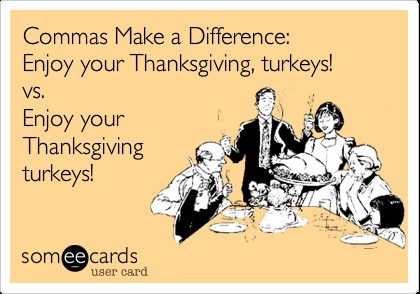
Random apostrophes–love them! The only reason a word like this would ever have an apostrophe would be if letters were missing, as in Thank[your mama]sgiving. Otherwise, as in this example, I have no idea why there would be an apostrophe in the middle of this word.
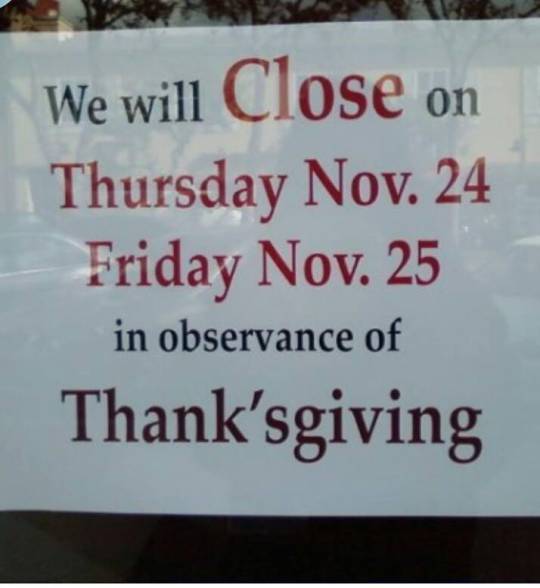
I found this one on Google. Unfortunately, I can believe that someone at the History Channel made this error because lots of people do. I even made it in a post once and even admitted it (here). But really. then and than are not that difficult. Then has an element of time (and then and time both have the letter “e”). Than refers to a comparison (and than and comparison both have the letter “a”). So now that you know better, here is day 2 of Thanksgiving Grammar Giggles.

In honor of Thanksgiving this week, we will post a Grammar Giggle that is somehow related to our holiday each day. I do hope that you are thinking of all you have to be thankful for and will allow me to say “Thanks” for supporting this crazy blog by contributing and by following. I am truly thankful for you. Now on to our Monday Grammar Giggle.
This sign is just a hot mess.
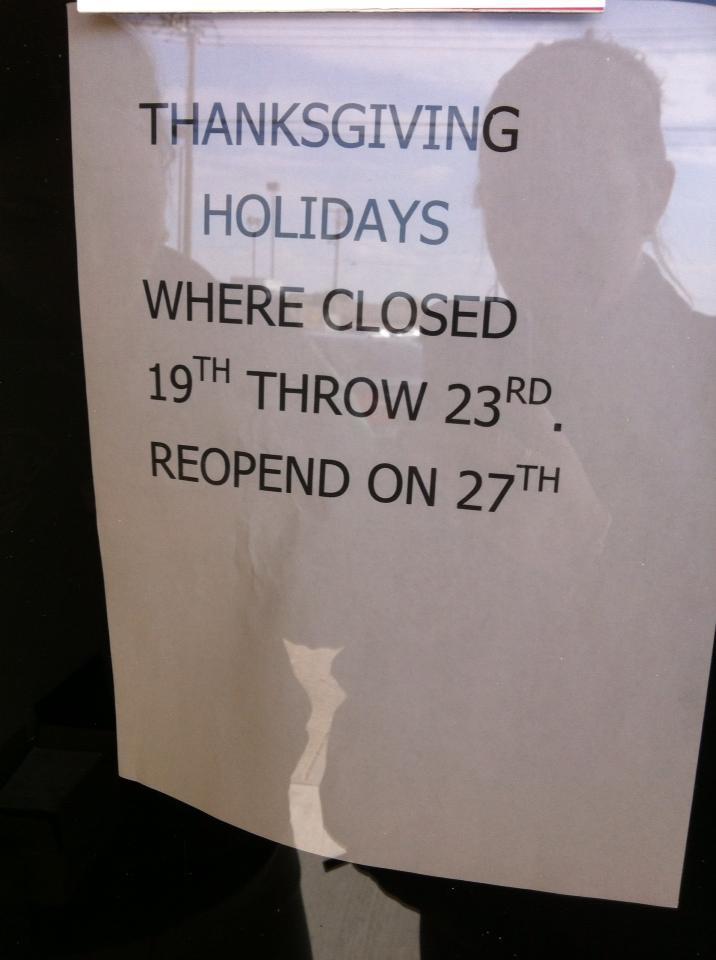
This picture is from my last trip to one of my favorite restaurants. There IS a difference! I live in the DESERT and I love to eat DESSERT.
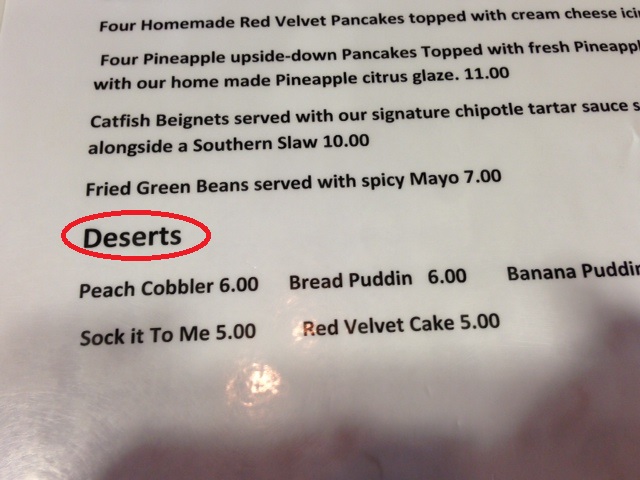
Here is an ad correction to a Piggly Wiggly electronic ad that doesn’t seem to make things any better. At least their price is now correct–hopefully!
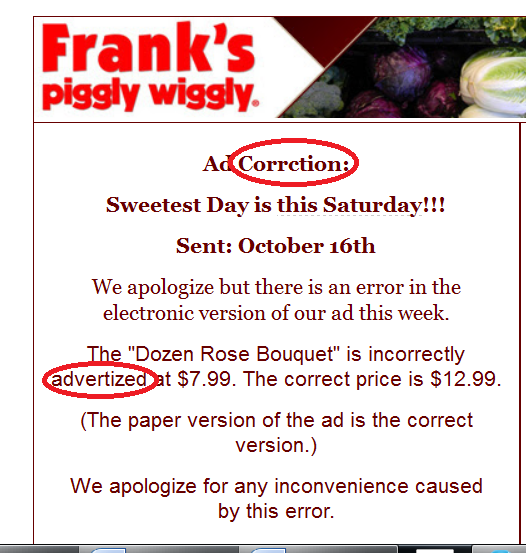
This was forwarded to me by a friend in another law firm who received it from opposing counsel in one of their cases. I understand some words are confusing, but if you struggle, take the time to learn them. Accept means to take or to receive and except means to exclude. So effectively what the attorney is saying in this letter is that his client will exclude the offer, which I would take to mean he did not want to accept it. Somehow, I don’t think that is what the attorney had in mind.

 Here are some rather random facts that you may or may not know:
Here are some rather random facts that you may or may not know:
1. Did you know that an envelope should be addressed in all caps, with street direction and designation abbreviated (i.e., 315 W CENTRAL AVE), with no punctuation, with the addressee’s name and title on the first line, the name of the company on the second line, the street address and suite number on the third line, and the city, two letter state abbreviation, and ZIP code on the last line? Postal OCR machines read from the bottom up to decide where to send the letter to be delivered, so if you use this format, your letter may just get there before one in another format. See USPS Publication 28 for detailed information about addresses.
2. Did you know that in a business letter an attention line is not really necessary? If you are directing it to someone’s attention, just address it to them. There really is no need for the “Attention” unless you do not know someone’s name and want to address it to “Human Resources Manager” or something like that. But with technology and the availability of corporate information today, you may be able to figure out who that person is and get your letter delivered directly to a person instead of to the “Occupant” trash bin.
3. Did you know that irregardless is not a word you should be using? Use regardless instead.
4. Did you know that emails should be written in English and not in “text speak”? Of course you did! I was just testing you.
5. Did you know that ellipsis marks are three spaced periods (regardless of how Word wants to format them for you)?
6. Did you know that you should proofread pleading captions and titles, inside addresses and re: lines in letters, and other things that may not be obvious to the author, but someone will be looking at so it should be right? Some attorneys have their Word settings so that the spell checker does not check words with all caps–which includes most legal document titles–and so these areas are very often overlooked by the author, even though they are one of the first places the reader will go. You certainly don’t want to start your reader off with a careless typo when they have more of your writing to read, do you?
7. Did you know that emails are correspondence too? Clients, opposing counsel, and judges are all reading our emails. It is important that we take as much care with email as we do with correspondence. Email still reflects your firm, so it should be right.
Now you hopefully know one or two new things.
Do you have questions about things you come across regularly in writing and proofreading? Send an email to proofthatblog@gmail.com and we will get it in a future issue.
This one comes from Twitter. The confusion between to, too, and two is high, but signmakers need to do more than use the “that’s the way they gave it to me” excuse. Between a few people, one can hope that someone would get it right. Then again . . .
